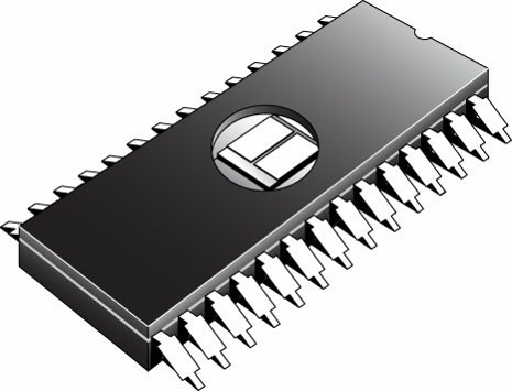Hardware Reference
In-Depth Information
A once-popular variation of the PROM is the EPROM. An EPROM is a PROM that is erasable. An
EPROM chip can be easily recognized by the clear quartz crystal window set in the chip package
directly over the die (see
Figure 5.3
)
. You can actually see the die through the window! EPROMs
have the same 27xxxx part-numbering scheme as the standard PROM, and they are functionally and
physically identical except for the clear quartz window above the die.
Figure 5.3. An EPROM showing the quartz window for ultraviolet erasing.
The purpose of the window is to allow ultraviolet light to reach the chip die because the EPROM is
erased by exposure to intense UV light. The window is quartz crystal because regular glass blocks
UV light. You can't get a suntan through a glass window!
Note
The quartz window makes the EPROMs more expensive than the OTP PROMs. This extra
expense is needless if erasability is not important.
The UV light erases the chip by causing a chemical reaction, which essentially melts the fuses back
together. Thus, any binary 0s in the chip become 1s, and the chip is restored to a new condition with
binary 1s in all locations. To work, the UV exposure must be at a specific wavelength (2,537
angstroms), at a fairly high intensity (12,000 uw/cm
2
), in close proximity (2cm-3cm, or about 1 inch),
and last for between 5 and 15 minutes. An EPROM eraser is a device that contains a UV light source
(usually a sunlamp-type bulb) above a sealed compartment drawer in which you place the chip or
chips.
A professional-type EPROM eraser can handle up to 50 chips at a time. I use a much smaller and less
expensive one that erases up to four chips at a time and is both economical and portable. An
inexpensive EPROM eraser is available from Andromeda Research Labs (
www.arlabs.com
).
The quartz crystal window on an EPROM typically is covered by tape, which prevents accidental
exposure to UV light. UV light is present in sunlight, of course, and even in standard room lighting, so
that over time a chip exposed to the light can begin to degrade. For this reason, after a chip is







